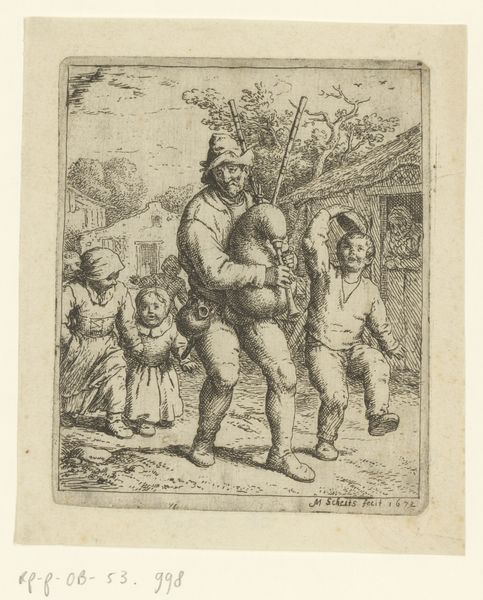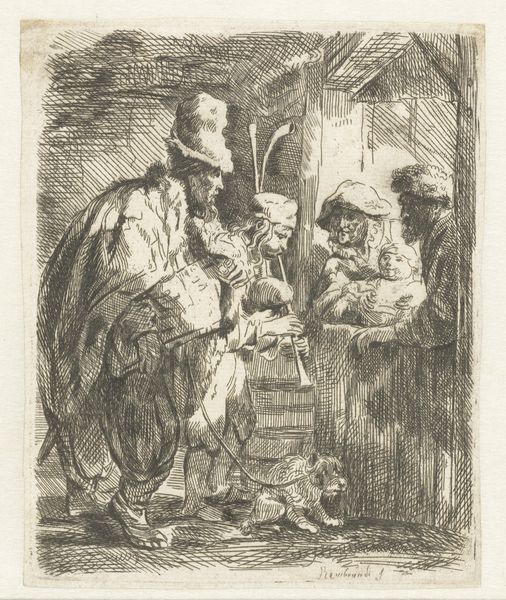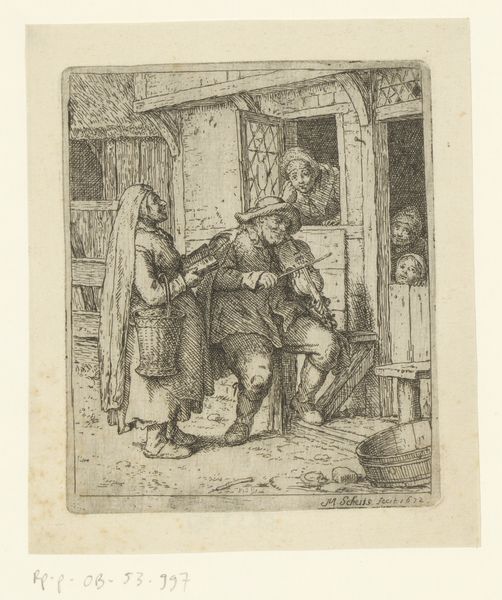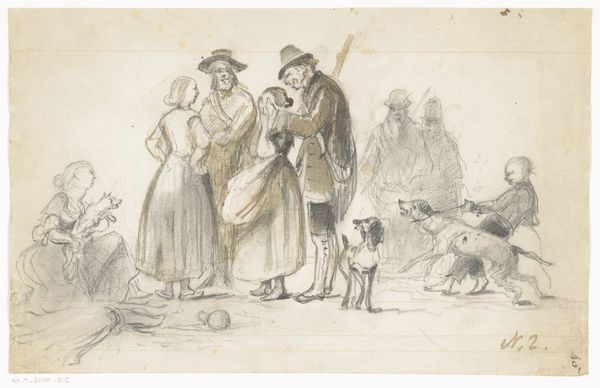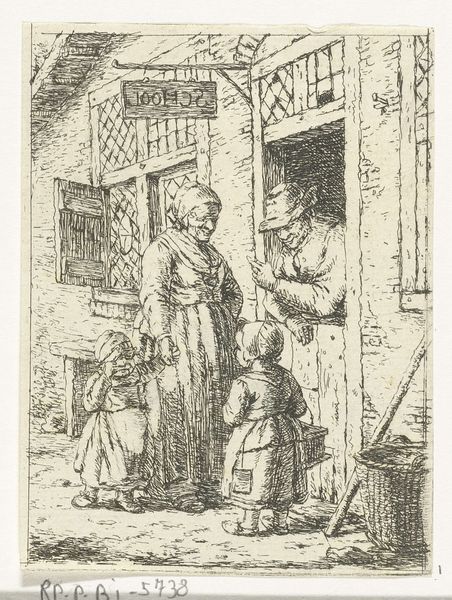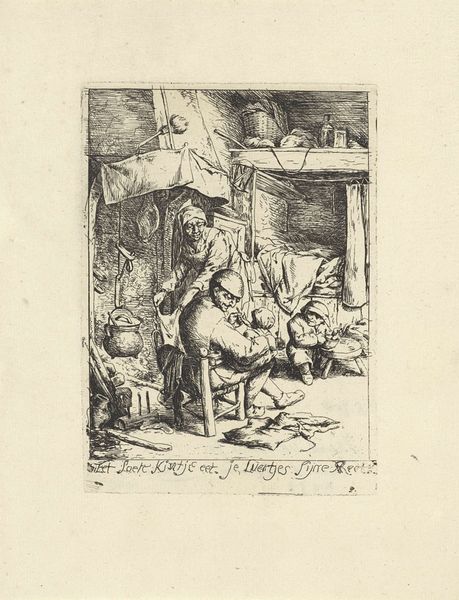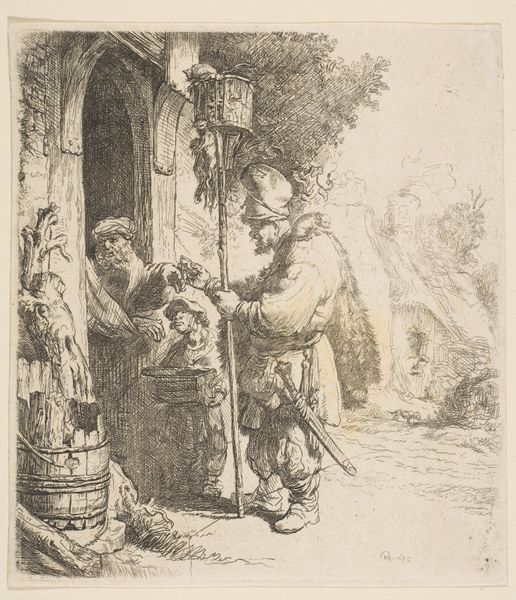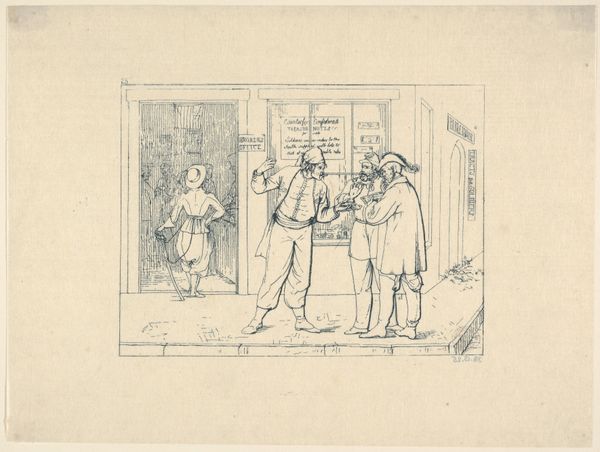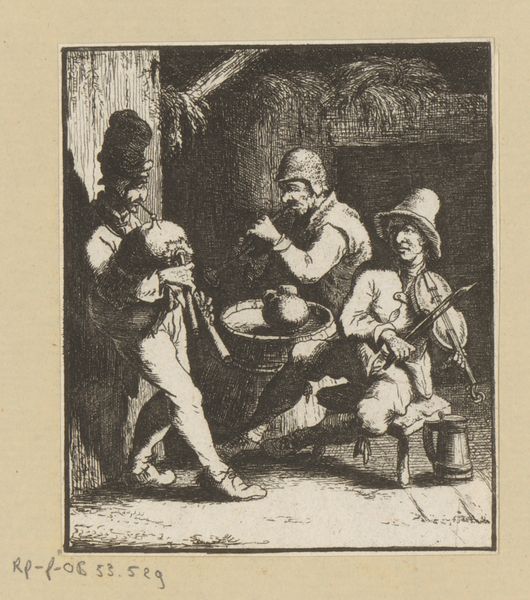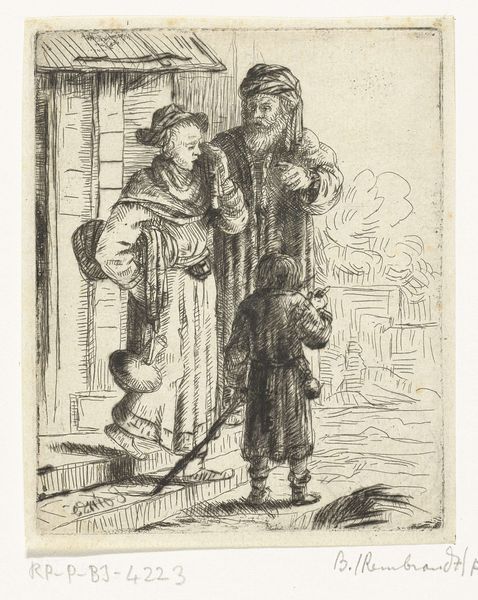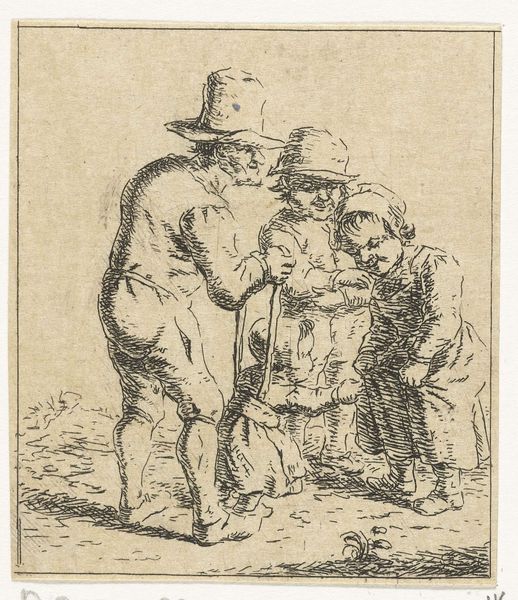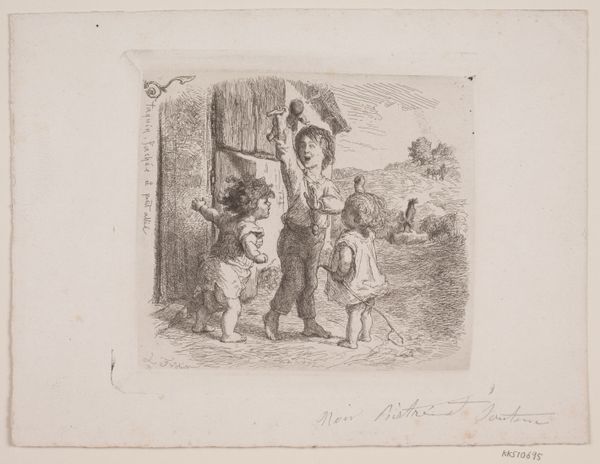
print, engraving
#
narrative-art
#
dutch-golden-age
# print
#
landscape
#
figuration
#
genre-painting
#
engraving
#
realism
Dimensions: height 150 mm, width 131 mm
Copyright: Rijks Museum: Open Domain
Curator: Ah, this print seems to capture a very particular mood – almost melancholic. Editor: Indeed. This engraving is titled "Man with Hurdy-Gurdy" by Matthias Scheits, dating back to 1672, during the Dutch Golden Age. What catches your eye in terms of the composition itself? Curator: The stark contrasts in the shading really bring out the grittiness. Note how the figure is positioned centrally, almost demanding our attention, but the composition is balanced by the family scene to his right. Editor: And what can be read from such sharp, intentional lines? Surely, these are intended to draw your eyes not only towards the hurdy-gurdy man, but the family that is perhaps reluctantly giving alms. How can you explain Scheits decision here? Curator: That is quite plausible, but in its formal elements the composition draws me to the play of light and shadow and creates an interesting textural contrast between the rough, worn appearance of the musician and the softer rendering of the faces in the crowd surrounding him. It makes the musical scene all the more sad in its execution, and contrasts his movement, suggested by the presence of the dog, to the relatively sedentary family. Editor: Exactly, the societal circumstances surrounding the piece. The musician would have likely traveled between various towns playing in order to sustain himself, playing as entertainment to people whom were relatively stable or of greater standing in order to attain capital to sustain. The choice in creating "Man with Hurdy-Gurdy", while simple, holds great insight into the life of the working class musician in 1672. Curator: Well, by focusing on the formal aspects, the interplay of light, shadow, and the character's placement, we tease apart how these elements contribute to a coherent reading. What seems to have begun as a mundane snapshot of lower class life becomes not so mundane as you spend more time deciphering it, especially considering social factors. Editor: Yes, but considering the socio-economic context, this print allows us to examine the Dutch Golden Age, not only as a period of economic prosperity, but with clear understanding for the lives that were being lived and sustained off the backs of the rich. This print has so much to tell and share regarding art in our history.
Comments
No comments
Be the first to comment and join the conversation on the ultimate creative platform.
